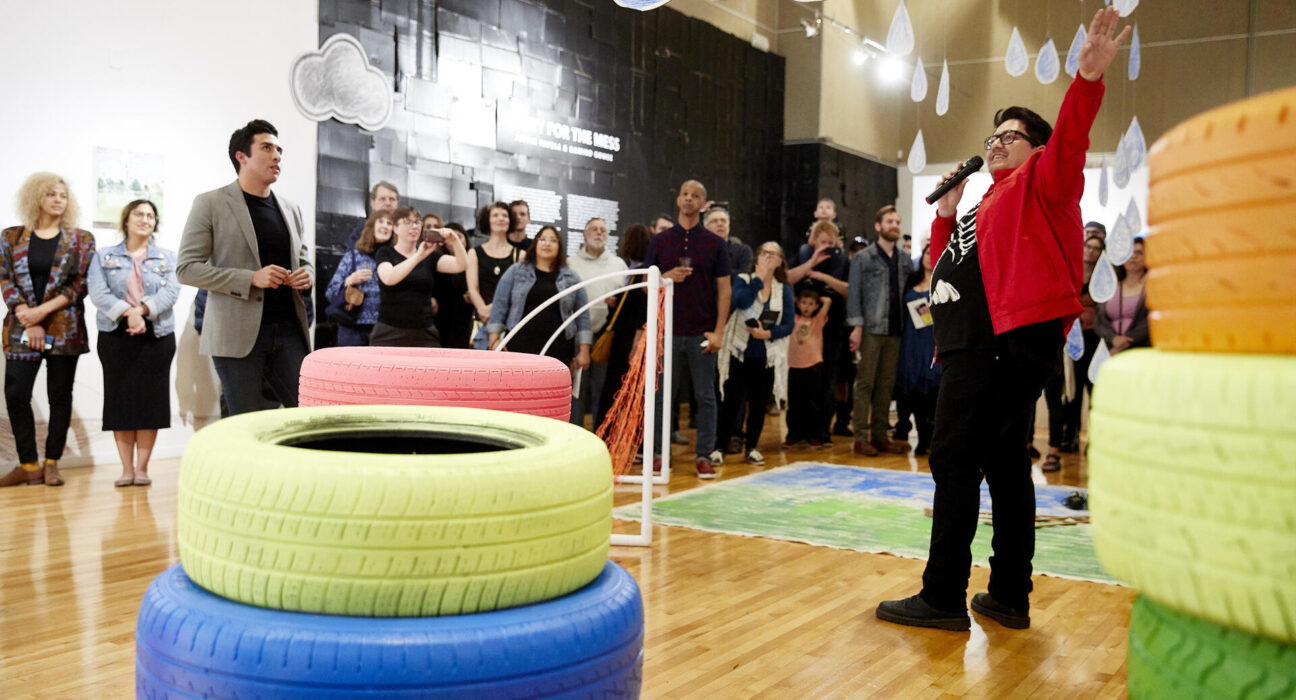From the graceful performance of a ballerina to the meticulous craftsmanship of a sculptor, the world of art offers a diverse palette of mediums. And each artist has a unique story to share of how they got on the stage or into a museum.
Studio art students in the College of Fine Arts examine the messages shared through the UNLV Artist Lecture Series, which brings in cutting-edge artists, designers, educators, and art historians to engage with students in classes, workshops, and public lectures. They share insights on their research, facilitate discussions, and offer critique.
The class also helps students develop their professional practice: the “how-to” of making, sharing, and selling art.
What is it?
ART 291 is a seminar offering a historical and theoretical examination of visual arts. In this experiential course, students delve into contemporary art by connecting with leading figures in art and related fields and developing the necessary pragmatic skills of an artist.
Why is it being taught?
Students must be well-rounded artists upon graduation to find success in their creative — and highly competitive — fields.
Teaching this course is Dave Rowe, chair of the Department of Art and a sculptor. Rowe says, “We teach technique, we teach concept, we teach content, we teach the students how and why to make art. But also the nuts and bolts of what you do once you graduate — how do you navigate that and get to the next stop on your career? And we talk about opportunities, like residencies and teaching.”
By the time students are through with the course, not only have they brushed with blue chip artists, they also have tools to launch their careers.
Who’s taking it?
This is a required class for students in the studio art program. As a 200-level course, most students are in their sophomore or junior year of study.
But, Rowe notes, the class has ballooned in popularity over the last five years. “When I started teaching it, I thought ‘What am I going to do with 60 students?’ and it keeps getting bigger and bigger.”
Who’s teaching it?
Rowe has an extensive background in ceramics, metalworking, metalcasting, and woodworking — he sums it up as: “If it’s three dimensional, I’ve tried it at least once.”
He puts his own spin on the course by prioritizing experiential learning.
Breaking the Mold of Traditional Classes
How it works
A huge component of the class is attending the UNLV Artist Lecture Series at the Barrick Art Museum. The class incentivizes student attendance for that series and, perhaps, sparks a lifelong interest in arts patronage.
The other part of class involves developing a professional practice. This includes everything from how to write a resume to how to create an artist statement that effectively augments a piece of art.
What students might be surprised to learn
Whether it be community organizing, painting, or performing, there’s no limit to the approaches students at UNLV can take to develop their art.
“I’ve found it’s hard to surprise these students because most of them grew up in Vegas. They’ve seen it all,” Rowe says. “But I think they are surprised to discover the diversity of approaches when it comes to art making and taking advantage of all different avenues of expression.”
What excites instructors the most about this class?
Having benefited from critical but engaged and caring faculty during his years as an undergraduate art student, Rowe is excited to be able to replicate that experience for his own students.
“This class is more along the lines of I found this really cool thing and I want to share it with you. A lot of times that cool thing is an approach to art making or [a connection to] an artist whose work is interesting and super relevant.”
Drawing Inspiration from Art
What’s something even laypeople should know from this course?
To appreciate art! In a world growing more isolated and divisive, art is a vehicle to understand the emotions and thoughts of others. “Seeing what’s out there, getting to experience another person’s point of view or another person’s kind of explanation of the world as they see it, cultivates empathy,” explains Rowe.
Where do students go next?
Students go on to embark on a wide array of career paths, reflecting the rich diversity of artistic mediums. With one of the highest job satisfaction rates of any industry, students tend to stay connected to art in one way or another.
The reading list
Rowe suggests watching featured artists on Art21 by PBS. “It’s been going on for, I want to say, 20 years. It’s been a very long-term production so you see how art evolves and what’s going on now compared to what was art 10 years ago. It’s a great place if you just want to learn a little bit about contemporary art.”

